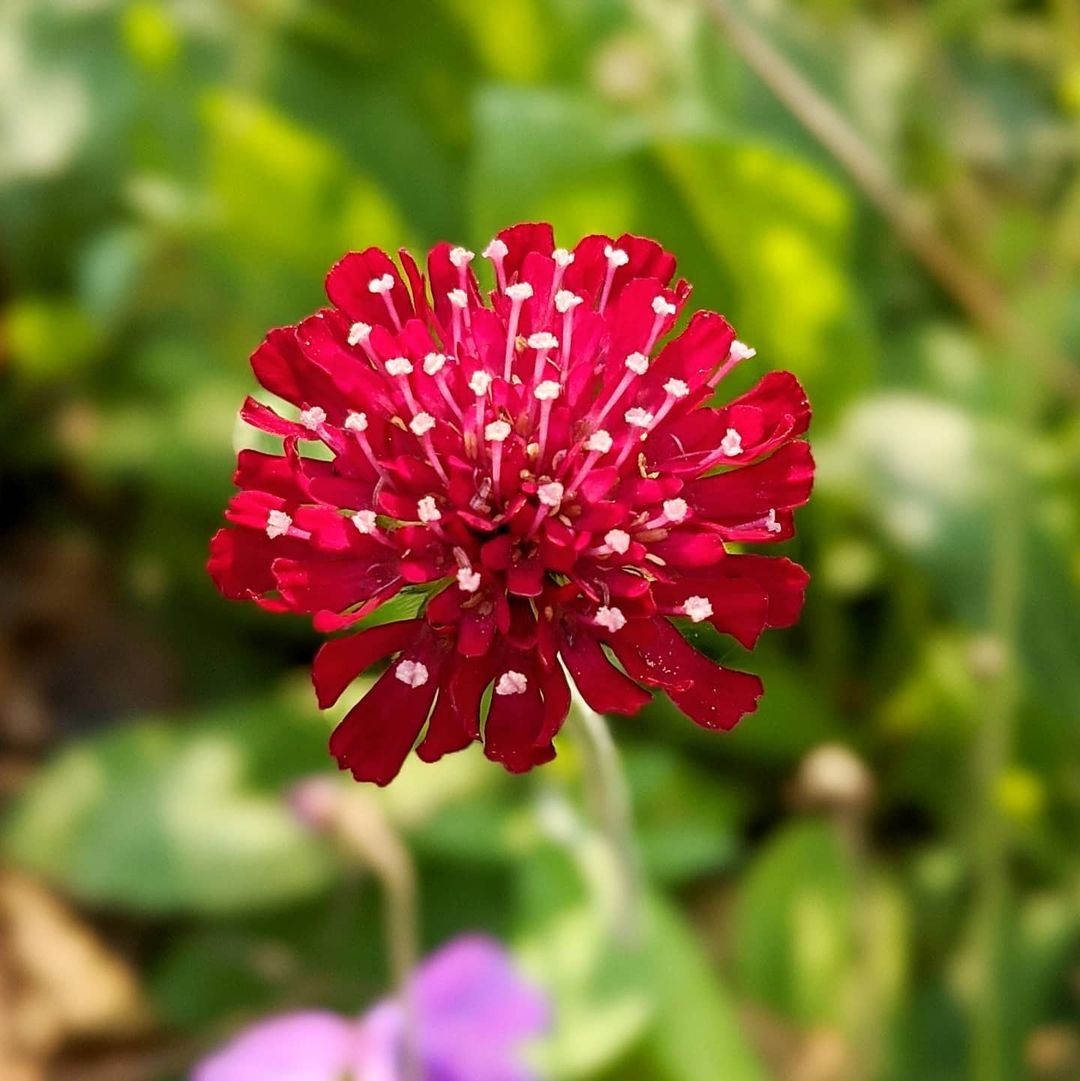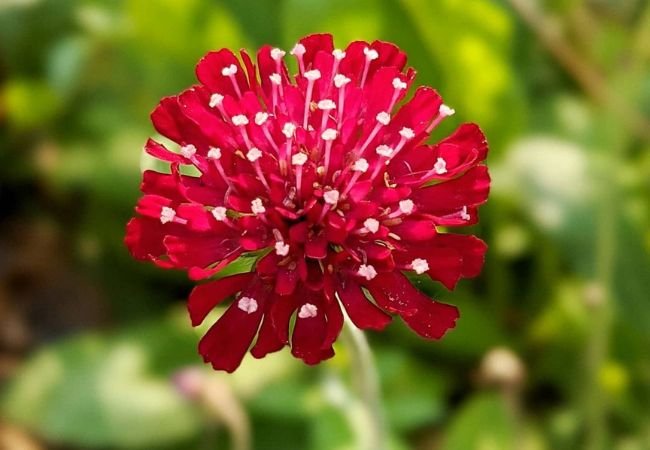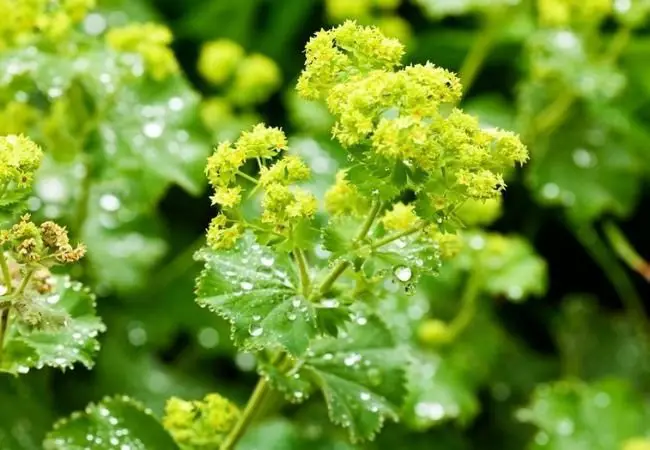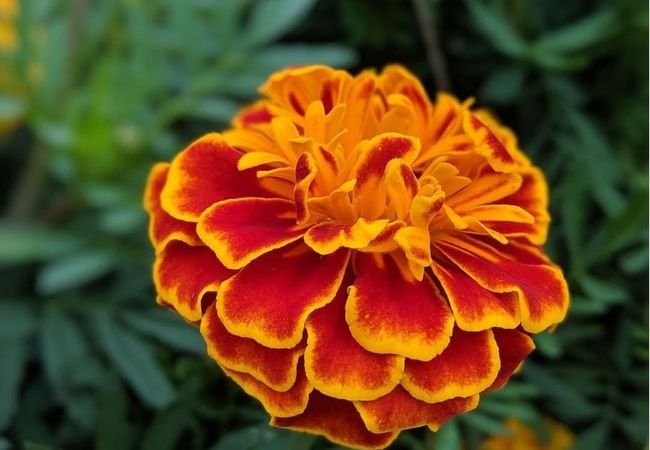Discover the delightful Knautia flower. Learn about its varieties, care tips and garden benefits. Perfect for pollinators and cottage garden enthusiasts.
Knautia flowers, often called pincushion flowers, are charming and versatile plants that add a touch of whimsy to any garden. With their delicate, pin-like blooms, they’re a favorite among gardeners and pollinators alike. In this article, we’ll explore the world of Knautia flowers, their care and why they’re a great addition to your garden.
Here’s a detailed chart for Knautia flowers:
| Category | Information |
|---|---|
| Botanical name | Knautia spp. |
| Common name | Knautia |
| Plant type | Perennial |
| Hardiness zone | Zones 5-9 |
| Sun exposure | Full sun to part shade |
| Soil type | Well-drained, fertile soil |
| Watering | Moderate watering |
| Growth habit | Upright, clumping |
| Height/Spread | 1-3 feet tall, 1-2 feet wide |
| Special features | Pincushion-like flowers in shades of pink, purple or white; attracts pollinators, deer resistant |
What are Knautia Flowers?

Knautia is a genus of flowering plants in the honeysuckle family. These plants are known for their round, pincushion-like flower heads made up of many small florets. They come in shades of pink, red and purple, with some varieties in white or near-blue.
Some common types of Knautia include:
- Knautia macedonica: The most popular garden variety
- Knautia arvensis: Also known as field scabious
- Knautia dipsacifolia: Wood scabious, native to Europe
The United States Department of Agriculture provides detailed information about the Knautia genus.
Growing Knautia Flowers
Knautia flowers are relatively easy to grow. Here are some tips:
- Sunlight: They prefer full sun but can tolerate partial shade.
- Soil: Well-draining soil is crucial. They don’t like wet feet.
- Planting: Plant in spring or fall, spacing plants about 12-18 inches apart.
- Water: Water regularly until established, then they’re quite drought-tolerant.
- Fertilizer: They don’t need much fertilizer. Too much can lead to floppy growth.
The Royal Horticultural Society offers comprehensive growing advice for Knautia plants.
Caring for Knautia Flowers
To keep your Knautia healthy and blooming:
- Deadhead spent flowers to encourage more blooms.
- Cut back plants by about one-third after the first flush of flowers to promote a second bloom.
- In late fall or early spring, cut back old growth to make way for new shoots.
- Divide plants every 3-4 years to maintain vigor.
The University of California Agriculture and Natural Resources provides information on pest management that can be applied to Knautia care.
Benefits of Knautia Flowers
Knautia flowers offer several benefits to your garden:
- For Pollinators: They’re excellent for attracting bees, butterflies and other pollinators. The U.S. Forest Service provides information on pollinator-friendly gardening.
- Long Blooming: With proper care, they can bloom from early summer to fall.
- Drought Tolerance: Once established, they’re quite resistant to dry conditions.
- Deer Resistance: Deer tend to leave these plants alone.
The National Wildlife Federation explains the benefits of using pollinator-friendly plants in gardens.
Uses of Knautia Flowers
Knautia flowers have several uses:
- In Gardens: They’re perfect for cottage gardens, wildflower meadows and borders.
- As Cut Flowers: They make lovely, long-lasting cut flowers.
- For Dried Arrangements: The flower heads can be dried for winter bouquets.
- Medicinal Uses: Historically, some species were used in herbal medicine, though always consult a doctor before using any plant medicinally. The National Center for Complementary and Integrative Health provides information on herbal medicines.
Interesting Facts About Knautia
Did you know?
- The name “Knautia” comes from Christian Knaut, a 17th-century German botanist.
- In the language of flowers, scabiosa (a close relative of Knautia) represents “unfortunate love.”
- Some Knautia species are used as food plants by the larvae of certain moth species.
- Despite their delicate appearance, Knautia flowers are quite sturdy and can withstand wind and rain.
The Smithsonian Gardens often provides interesting insights into various plants and their cultural significance.
Knautia flowers are a delightful addition to any garden. With their unique pincushion blooms, long flowering period and benefits for pollinators, they offer both beauty and ecological value. Whether you’re creating a cottage garden, a pollinator haven or simply looking for a charming and low-maintenance plant, Knautia is an excellent choice.
For more information on growing Knautia and other garden flowers, visit the United States Botanic Garden website.
Remember, while Knautia is generally easy to grow, it’s always best to consider your specific climate and garden conditions. Don’t hesitate to consult local gardening experts or botanical gardens for advice tailored to your area. Happy gardening!
For more gardening tips and plant care guides, visit usagardenhub.com.







One comment on “Knautia : The Charming Pincushion Flower”